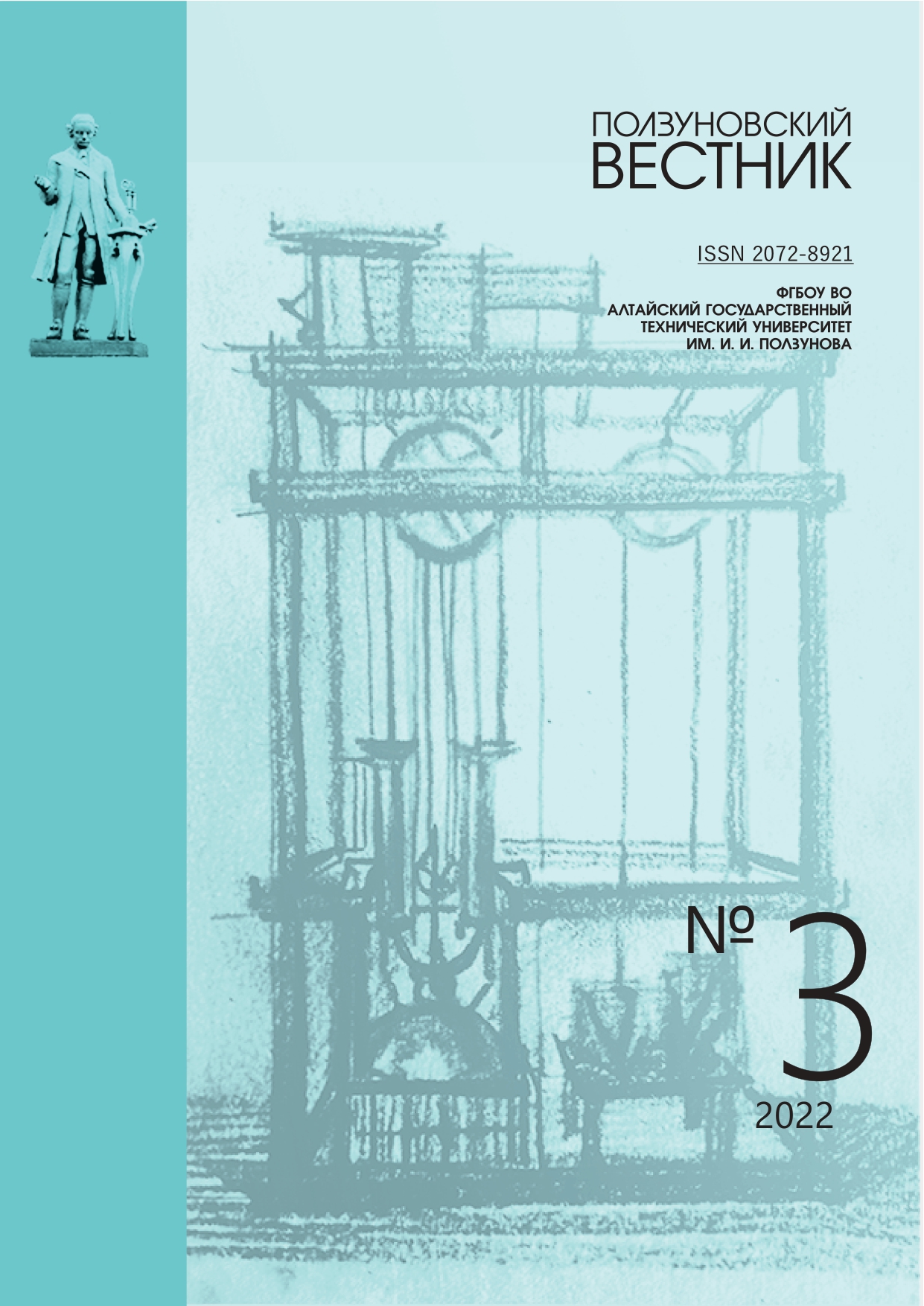SUBSTANTIATION OF TECHNOLOGICAL PARAMETERS FOR OBTAINING PROTEIN EMULSIONS FROM SUNFLOWER SEED KERNELS
EDN: LBMCTP
DOI:
https://doi.org/10.25712/ASTU.2072-8921.2022.03.001Keywords:
food technologies, emulsion drinks, emulsions, sunflower seed kernel, ultrasonic processing, protein extraction, stability of emulsions, micelle sizes.Abstract
The growth of consumer demand for vegetable analogues of dairy products and beverages is noted annually. Simultaneously with this dynamic, the interest of manufacturers in developing effective technologies for obtaining such products is also growing.
Sunflower is one of the main agricultural crops in the Altai Territory, characterized by high yields and differing from most oilseeds by a significantly higher content of soluble protein. The purpose of the work was to substantiate the technological parameters for obtaining stable emulsion drinking systems – analogues of milk and drinking cream – from sunflower seeds. When performing the research, drinking quality water and full-fat flour (mint) prepared in the laboratory from raw and fried sunflower seed kernels harvested in 2021 were used. The model systems were processed in an ultrasonic field at a temperature of 70 °With and the frequency of exposure of 22 kHz, the studied hydromodules are 1:5...1:9. Control of the efficiency of protein extraction and the amount of solids was carried out by standard methods; centrifugal action was used to assess the colloidal stability of emulsions and the separation of insoluble fine suspensions.
When using mint from the raw kernel of sunflower seeds, the desired colloidal stability of the resulting colloidal systems has not been achieved. The use of roasted kernels with a hydromodule of 1:9 allowed to obtain colloid-stable cream-colored emulsions containing up to 2.5-3.0 % of solids, including from 1.0 % to 1.5 % protein, which is comparable with the characteristics of vegetable analogues of drinking milk presented on the consumer market.
References
Жебо А.В., Алешков А.В., Каленик Т.К. Тех-нология и характеристика заменителей молока на растительной основе // Вестник ВСГУТУ. 2019. № 4 (75). С. 25-31.
Лаврова Л.Ю. Разработка технологии и рецептур биопродуктов на основе растительного молока // Индустрия питания. 2019. Т. 4. № 2. С. 43-50. DOI 10.29141/2500-1922-2019-4-2-6.
Consensus document on compositional con-siderations for new varieties of sunflower: key food and feed nutrients, anti-nutrients and toxicants // Se-ries on the Safety of Novel Foods and Feeds. Paris. 2007. № 16. 32 р.
Guo S., Ge Y., Na Jom K. A review of phyto-chemistry, metabolite changes, and medicinal uses of the common sunflower seed and sprouts (Helian-thus annuus L.) // Chemistry Central Journal. 2017. № 11, 95. DOI 10.1186/s13065-017-0328-7.
Žilić S, Barać M, Pešić M., Crevar M, Stano-jević S, Nišavić A, Saratlić G, Tolimir M. Characteriza-tion of sunflower seed and kernel proteins. 2010. Vol. 33, № 52. P. 103-114.
Khurana S., Singh R. Sunflower (Helianthus annuus) seed // In: Tanwar B., Goyal A. (eds.) Oilseeds: health attributes and food applications. Springer, Singapore. 2020. Р. 123-143. DOI 10.1007/978- 981-15-4194-0_5.
Petraru A., Ursachi F., Amariei S. Nutritional characteristics assessment of sunflower seeds, oil and cake. Perspective of using sunflower oilcakes as a functional Ingredient // Plants. 2021. № 10, 2487. DOI 10.3390/plants10112487.
Nenova N., Drumeva M. Investigation on pro-tein content and amino acid composition in the ker-nels of some sunflower lines // Helia. 2012. Vol. 35. Р. 41-46. DOI 10.2298/HEL1256041N.
Ivanova P., Chalova V., Koleva L., Pishtiyski I., Perifanova-Nemska M. Optimization of protein extraction from sunflower meal produced in Bulgaria // Bulgarian Journal of Agricultural Science. 2012. Vol. 18. № 2. Р. 153-160.
Downloads
Published
How to Cite
Issue
Section
License
Copyright (c) 2022 Аnastasiya V. Akinfeeva, Elena Yu. Egorova, Sergey N. Tsyganok

This work is licensed under a Creative Commons Attribution 4.0 International License.















 .
. This work is licensed under a
This work is licensed under a 
